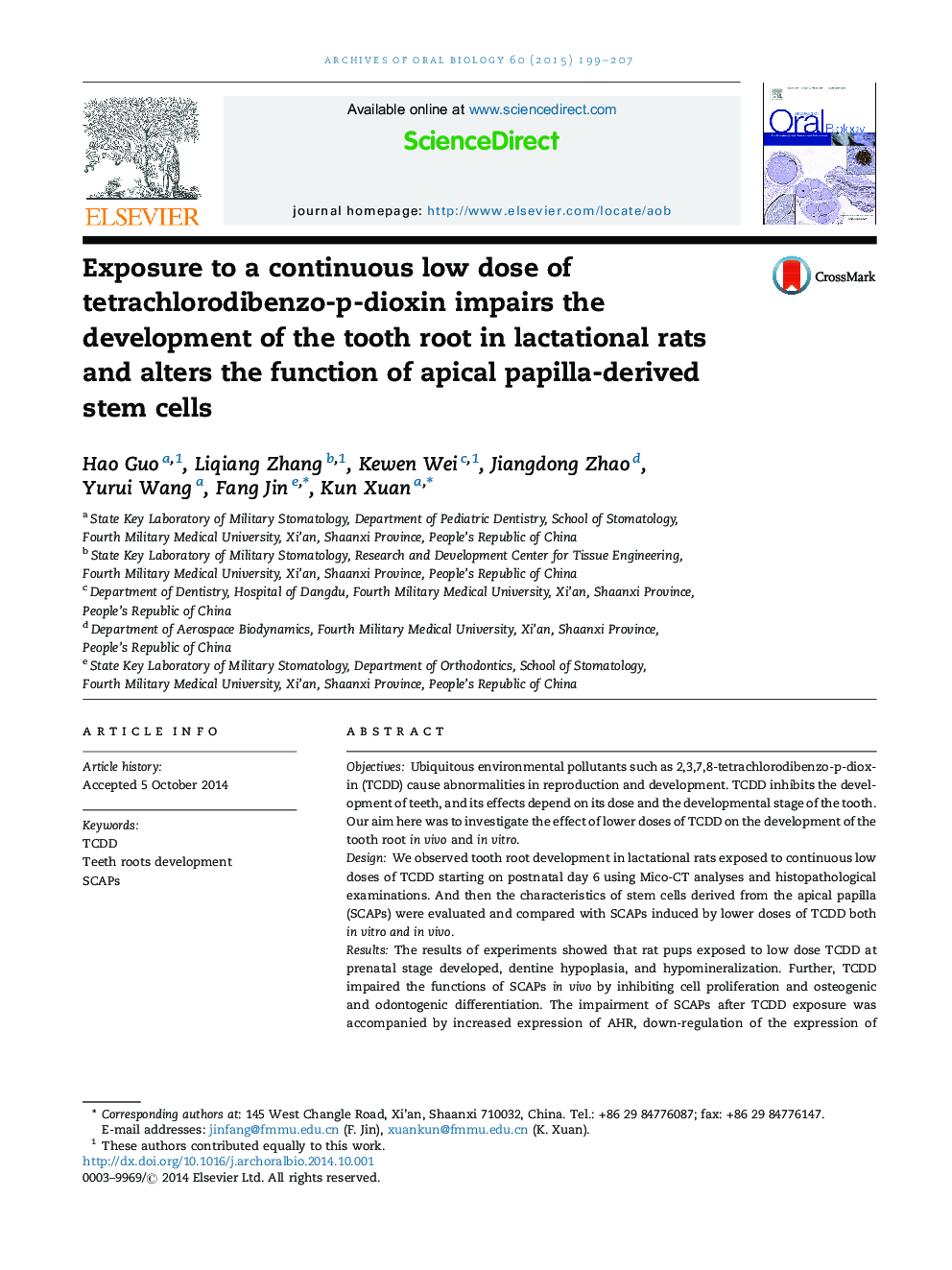| Article ID | Journal | Published Year | Pages | File Type |
|---|---|---|---|---|
| 3120857 | Archives of Oral Biology | 2015 | 9 Pages |
ObjectivesUbiquitous environmental pollutants such as 2,3,7,8-tetrachlorodibenzo-p-dioxin (TCDD) cause abnormalities in reproduction and development. TCDD inhibits the development of teeth, and its effects depend on its dose and the developmental stage of the tooth. Our aim here was to investigate the effect of lower doses of TCDD on the development of the tooth root in vivo and in vitro.DesignWe observed tooth root development in lactational rats exposed to continuous low doses of TCDD starting on postnatal day 6 using Mico-CT analyses and histopathological examinations. And then the characteristics of stem cells derived from the apical papilla (SCAPs) were evaluated and compared with SCAPs induced by lower doses of TCDD both in vitro and in vivo.ResultsThe results of experiments showed that rat pups exposed to low dose TCDD at prenatal stage developed, dentine hypoplasia, and hypomineralization. Further, TCDD impaired the functions of SCAPs in vivo by inhibiting cell proliferation and osteogenic and odontogenic differentiation. The impairment of SCAPs after TCDD exposure was accompanied by increased expression of AHR, down-regulation of the expression of Runx2, and alkaline phosphatase, suggesting that the AHR pathway mediated the effects of TCDD.ConclusionThese results provide the first insights into the toxicity of TCDD, which adversely affects the development of the tooth root through indirectly altering the function of SCAPs.
